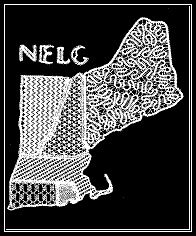A big thank you to Gail, Rosalie, Sharon, Marjorie, Linda, Mary Lou, Sr. Madeleine and Sr. Annaliese for demonstrating at our first annual Crafts Center celebration! With your help the weekend was a huge success! Our visitation and revenue were significantly higher than the same day last year. I personally loved having you there and getting to spend time (and make lace!) with you and, of course - we got the word about lace out there to lots of people!
And yes, you read that right - it is going to be an annual event! Or, we're doing it again next year, anyway! I will be attending a "debriefing" meeting tomorrow afternoon, so if any of you have any suggestions for improvements, I'll be glad to take them with me. If you don't see this in time, or you think of something later, no worries - pass it along anyway and it'll get to one of the innumerable planning meetings we'll be having between now and next September.
Again, thanks so much for your part in making the weekend a success!

